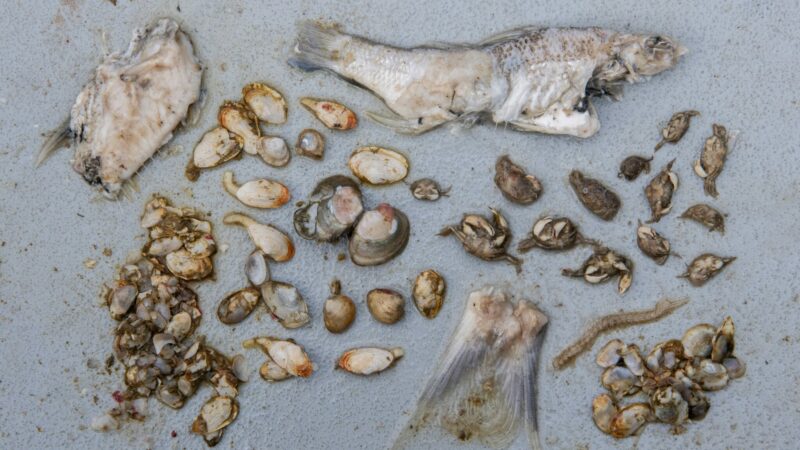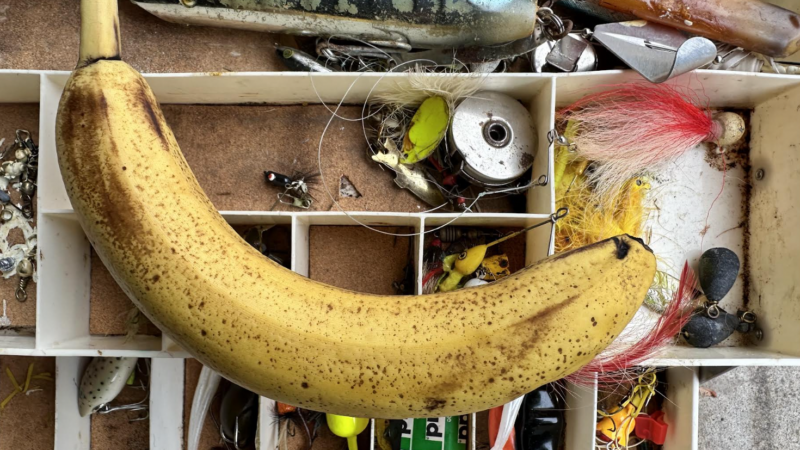A Beginner’s Guide to Surf Fishing
Surf fishing can be daunting. Standing on the beach looking at the crashing waves and vastness of the ocean makes you feel small. It’s not like a pond or river that you can more easily break down. Beginner surfcasters are often plagued by one simple question: Where do I go?
The reality is that it’s not as hard to get into surf fishing as you might think. There are visual cues that will point you in the right direction, and once you have a taste of success, future trips will only get more productive.
The beauty of surf fishing is that while the target species will change by region, the methods vary very little. Though the best baits will vary by species from location to location, and the best times of year can be different in Florida than they are in New York, reading the beach to find the fish will be the same in both places. The delivery methods and gear will also be the same.
The best rigs and tackle cross over on every coast. So, we’re going to look at surf fishing through a wide lens. Presented here are the tactics and kit that will catch you fish anywhere in the country. Once you have some success simply putting some fish on the sand, you can take a deep dive into more specialized tackle and approaches dialed into specific targets, but you’ve got to walk before you run.
Understand Tides
The ocean is not a lake. It may look like one, but beaches are always changing. Except for slack tide, there is always current pulling water away from the beach until dead low tide or pushing water into the beach until dead high tide. If you remember nothing else going forward, remember this: Nothing matters more in your surf fishing success than understanding tides.
Put bluntly, just showing up on a beach whenever you feel like it or have time is like playing the lottery. That’s because regardless of species or location, it’s rare to have action in the surf all day. There will be one or two windows of activity in a 24-hour period. Hit it right and you’re a hero; miss it and you’re just twiddling your thumbs. Luckily, it’s very easy to get a tide chart for just about anywhere you plan to fish via a quick Google search. The most accurate readings will be for inlets, so look on a map and find the closest inlet north or south of your location and base your attack time on those readings.
The Best Tides
The perfect tide window can certainly vary by species, but, again, we’re talking in generalities. The bite window for most surf targets will happen as the tide nears its highest point and when it’s halfway back to dead low. This means you should arrive 2 to 3 hours before dead high tide and fish approximately 3 hours after dead high tide.
More water (high tide) allows fish to comfortably move closer to the beach. As the tide comes in, baitfish and other forage will move into the shallowest water possible for safety. As the tide begins to fall, gamefish know the current will pull forage back out to deeper water. The turbulence from the outgoing current will also roil the sand, exposing clams, crabs, worms, and shrimp. (Read my full guide on the best tides for fishing).
How to Read the Beach
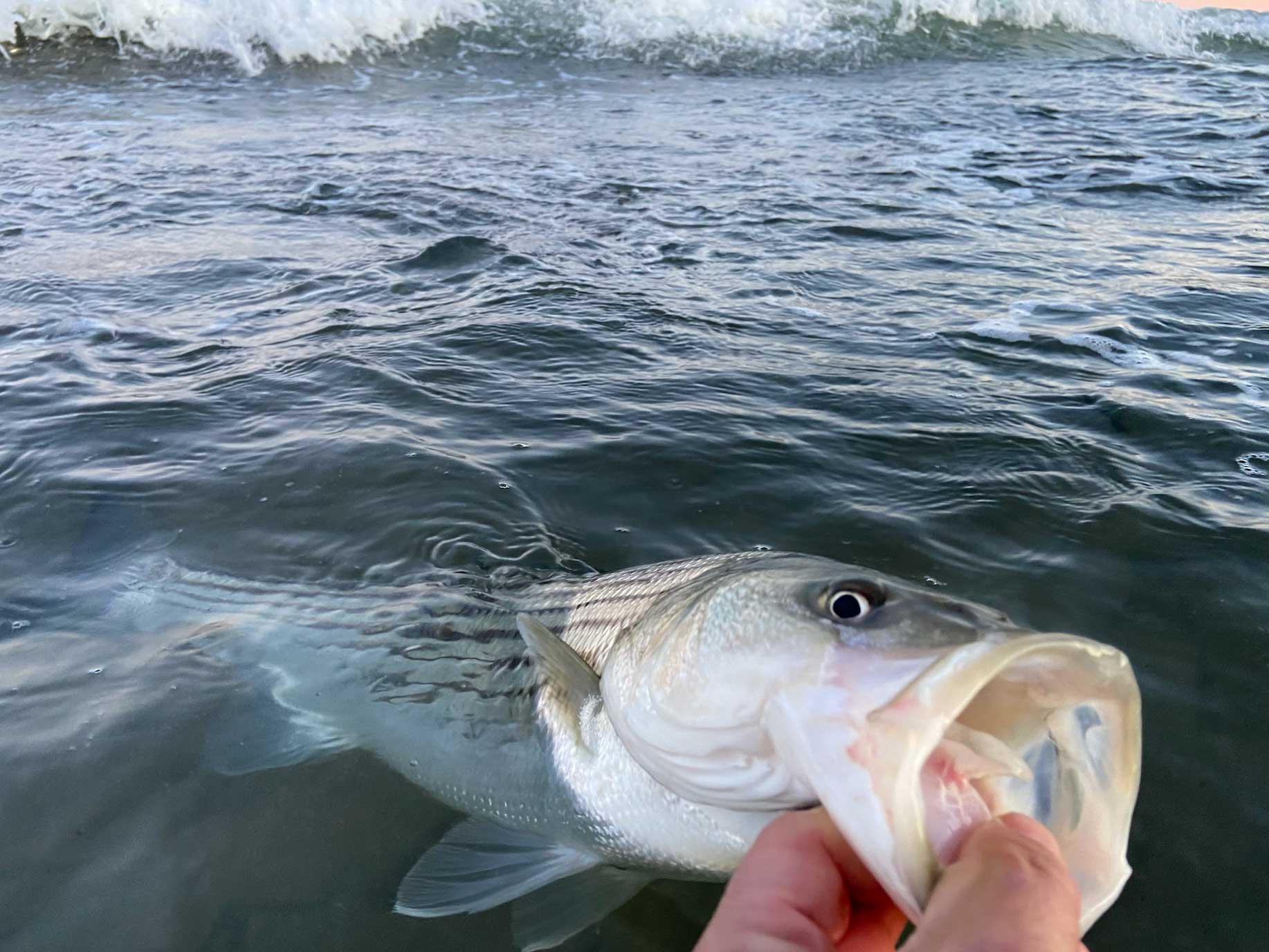
You’ve figured out the tide and you’re on the beach at the right time to hit a feeding window, but that doesn’t mean you should just start casting everywhere and anywhere. You’ll increase your odds of success by reading the water and looking for depth variances.
When the water is high, gamefish will use troughs running parallel to the beach as highways. There can also be holes and dips within casting range that bottom feeders will use to ambush prey. The easiest way to identify these areas is by watching the waves.
Focus on a wave breaking offshore and follow it in. If it crashes far out and that foamy whitewater rolls all the way to your feet in an unbroken line, it’s a sign that the wave was moving over shallow or at least equal depth bottom. If a wave breaks offshore, rolls for a bit, then flattens out, it tells you it just encountered a deeper hole or trough. These areas can be small, sometimes only causing one edge or corner of a wave to dissipate, but if you can get your bait or lure to these spots with irregular bottom, you’ll have a much better chance of success.
Gearing Up for the Surf
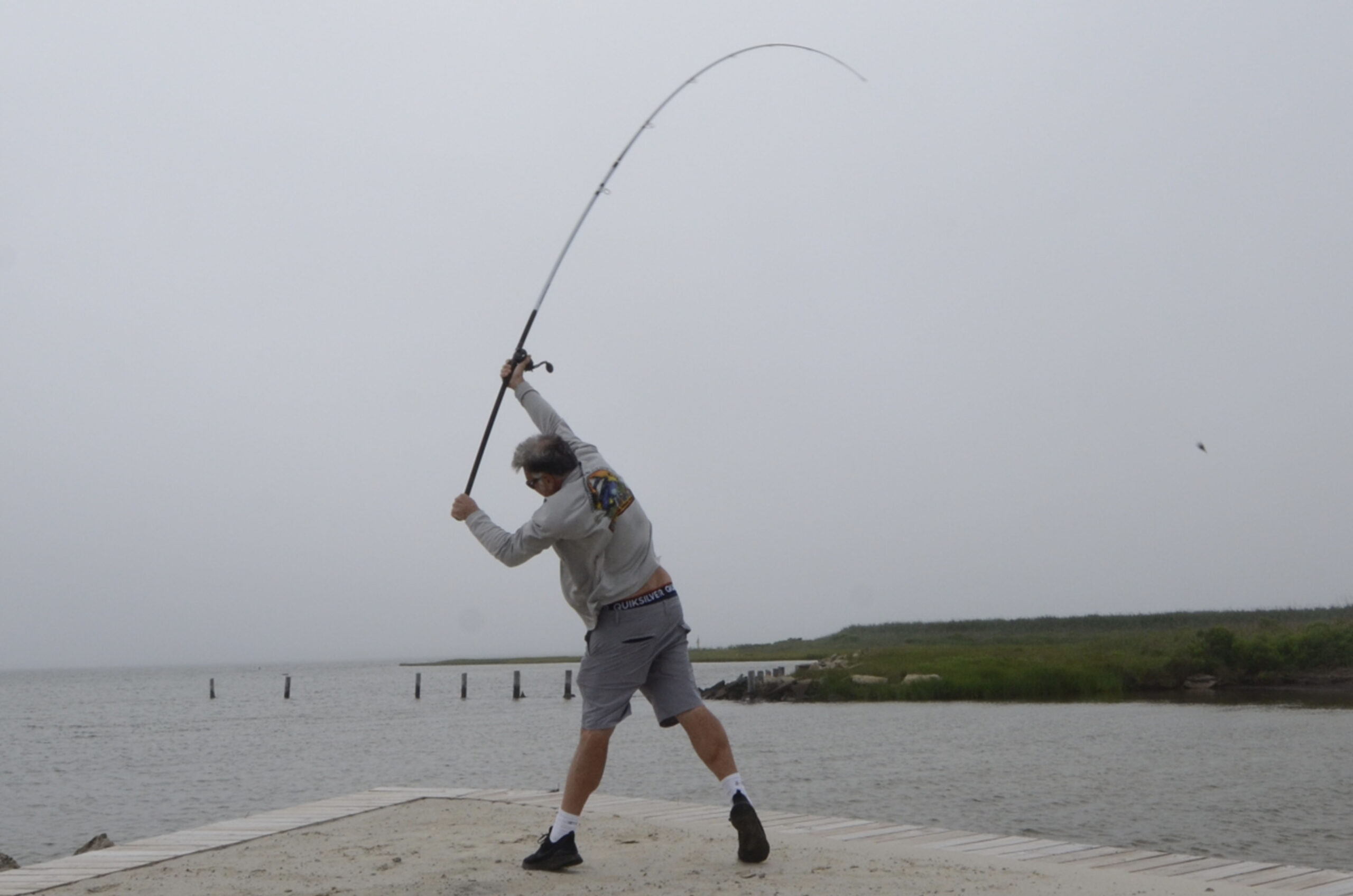
Rod, Reel, and Line
There are lighter surf rods designed for throwing certain lures at specific fish. Then there are giant, heavy meat sticks used for massive targets like bull redfish. There is niche tackle across the board for surf pursuits, but if you must narrow it down to one do-it-all, go-anywhere outfit, it’s a 10-foot spinning rod, a 6500 to 7500 size reel, and a spool loaded with 30-pound braided line. That combination will handle a 40-plus-pound striped bass as well as a small Florida pompano and everything in between.
Read Next: Best Surf Fishing Rods
Will the pompano be as much fun to fight on a rod that heavy? Of course not, but it’s critical to remember that surf gear is tailored to deliver more than the power of the fish. Species like pompano, croaker, and puppy drum aren’t that big, but you might need to send a 6-ounce sinker and bait rig 100-feet off the beach to get in the zone where they’re feeding, and that won’t be as easy with a light rod that won’t be able to handle so much lead. Likewise, a 10-foot rod might struggle to fire lighter lures as far as you’d like them to go, but if you need to send a metal lure a mile to blitzing bluefish, you need the length and power.
Read Next: Best Surf Fishing Reels
Surf Fishing Accessories
Sand Spike
Rule number one: never let your reel touch the sand. Getting sand out of your gears and rotors is a nightmare and can sometimes ruin inexpensive reels entirely. That’s why you should always have a sand spike. Whether you buy a cheaper PVC model or metal spike, these tools drive deep into the sand and hold your rod. If you’re soaking bait they’re a must, but even if you’re fishing with lures, a spike provides a clean, secure spot for your rod when re-rigging or unhooking a fish.
Plug Bag
If you plan to fish hard-plastic minnow plugs, metal lures, or bucktail jigs, you’ll want to be mobile and cover a lot of beach. Lugging around a traditional tackle box or bag can be a pain, so opt into a plug bag that slings over your shoulder. Many feature drain holes that allow saltwater to run out if you get splashed, and they also allow you to rinse the entire bag off with freshwater without removing all your lures.
Surf Cart
Collapsible surf carts are great investments if you intend to do a lot of bait fishing. Many feature rod holders, but, more importantly, they provide an easy way to get your bait cooler, rigging kit, knife, cutting board, pliers, and sand spikes to your fishing location in one shot. They essentially become a mobile workstation, and if you’ve got a long walk from the car to your spot, they’re a dream.
Essential Bait Rigs and Components
Most tackle shops along the coast carry a wide selection of pre-tied bait rigs for local surf species. All you have to do is tie one to your mainline and add a sinker. What you’ll notice, however, is that while the components of these rigs change, their configurations do not. As an example, if you’re targeting striped bass in New Jersey, the rig might be tied with 50-pound leader material and feature large 9/0 size circle hooks. But the same rig can be used for tiny croakers, it would simply be tied with a 15-pound leader and use size 3 baitholder J hooks. All three of the rigs presented here can be adapted to practically any species on any coast by altering the size of the components. Before diving into rigs, however, here are a few universal components you should understand.
Key Components
Pyramid Sinkers
Though there are multiple styles of sinker that can be used in the surf, a pyramid sinker is most common for delivering bait. Its design helps it fly farther through the air, and it drives into the bottom like an arrow when it touches down. Sand, silt, or mud can then wash over the wider end, essentially creating an anchor that will hold your bait in place without rolling in the waves.
Bank Sinkers
Banks sinkers have more of a teardrop shape. They’re designed for soft bottom, but even on harder sand they have benefit. Species like pompano, croakers, and kingfish often rove around in the surf line hunting for small forage species. With that in mind, a bank sinker will allow your bait to move with the waves and tide, therefore covering more water.
Floats
Floats come in many shapes and sizes and can be made of foam or, in some cases, balsa wood. Some are the size of pills while others are half the size of a cigar, but they all have two main functions. Floats can be incorporated into any bait rig and are usually pegged in place right ahead of the hook. First and foremost, they help suspend your bait off the bottom, which can be a boon for catching species like striped bass, croakers, and pompano. They also add visual appeal as they’re brightly colored and can help fish find your bait from farther away.
Surf Fishing Bait Rigs
Standard Bait Rig
The standard bait rig begins with a 3-way swivel tied to your main line. This component will allow your leader and weight to rotate independently in the roiling surf, thus reducing twisting and tangling. A snap is attached to the second eye of the 3-way swivel to hold your sinker. The leader running to your hook is attached to the third eye of the swivel to complete the rig.
High-Low Rig
A high-low rig starts with a barrel swivel at the top, which attaches to your main line. Next comes the leader which features two dropper loops with a hook at each end—one closer to the swivel and the other closer to the bottom. At the end of the leader is a loop to hold the weight. In this configuration, the baits are suspended above the weight, one high and one low. Not only will this rig allow you to present two pieces of bait simultaneously, but it will also allow you to keep offerings in two parts of the water column. Quite often you’ll find that one bait or the other draws more strikes.
Fish Finder Rig
The fish finder rig starts with a special component called a sinker slide. This plastic sleeve features an eyelet for a clip to hold your weight. The sinker slide is threaded onto your main line first. A bead is threaded on next, and then a barrel swivel is tied to the main line to act as a stopper. The leader featuring the hook is tied to the second eye of the barrel swivel to complete the rig. The key benefit of a fish finder rig is that the fish can move away with the bait without instantly feeling the resistance of the weight. This rig also shines with larger cut baits. You can keep the leader short, thereby reducing the overall size of the rig. This will reduce spinning and twisting during the cast.
Best Lures for the Surf
While there are near-countless lures that produce in the surf, there are a few staples. Whether you’re after snook or redfish, striped bass or bluefish, all of these larger predators feed on smaller baitfish. Therefore, our picks for must-have lures will produce bites anywhere.
Metal Lures
Shiny metal lures like the Kastmaster are killers in the surf because they’re heavy and aerodynamic. You can send one a mile if necessary, and you can easily change the presentation by altering your retrieve speed. Reel quickly to mimic a scared, fleeing baitfish, or reel and pause to mimic an injured baitfish falling to the bottom. Read my full guide to metal lures for striped bass.
Bucktail Jigs
One of the most versatile lures ever created is a plain white bucktail jig. It works on calm beaches or in the rough surf, in dirty water and clean water. Their weight helps them fly far, and they can be hopped along the bottom or reeled quickly to cover the upper part of the water column. Tip them with a squid strip or soft-plastic grub to ramp up scent and flutter. Read our full guide to fishing with bucktail jigs.
Paddle-tail Swimbaits
Pre-weighted paddle tail swimbaits like the Storm Shad are available in a variety of sizes and colors. They’ll match just about any baitfish that swims and can be cast a good distance. Simply reel at a steady pace to get that tail thumping or hop them along the bottom during a slower retrieve.
Diving Plugs
Diving plugs like the Daiwa SP Minnow are staples in the striped bass surf game, but tarpon, redfish, and snook will hammer them, too. The only downside to these lures is that they don’t achieve the same casting distance as heavier metals and bucktails. That’s OK, though, because after dark even trophy specimens will come in very tight to the beach to feed. A pro move is reeling painfully slow, letting the receding waves do most of the pulling the plug down, letting it wiggle, and then popping back to the surface between sets.
Read Next: The Best Bait for Striped Bass
Final Thoughts on Getting Into Surf Fishing
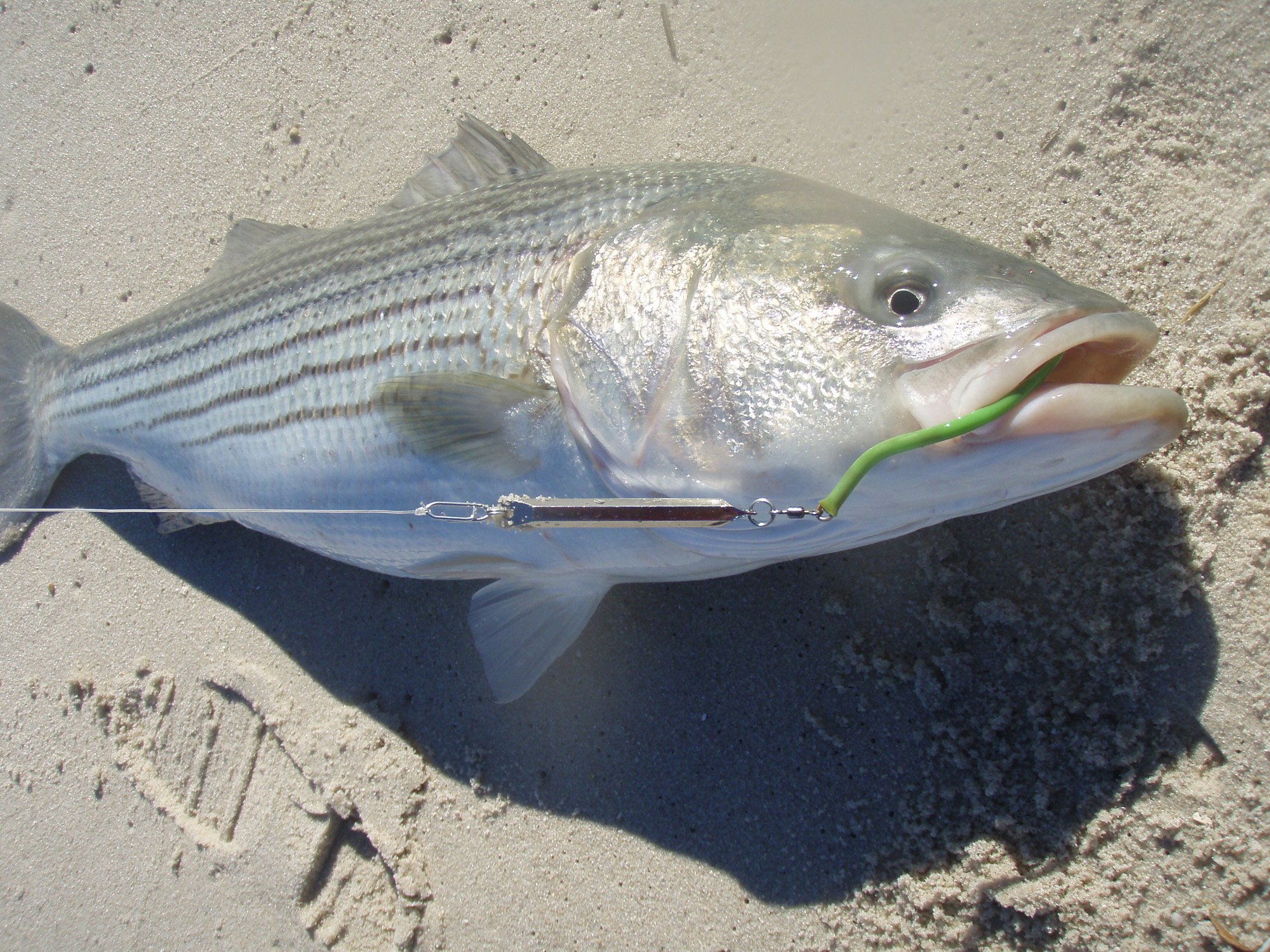
Photo Courtesy of Matt Farrell.
This article is just the beginning of your surf fishing education. There’s a lot of good content out there to study up. Also local anglers and tackle shops will help you learn a lot too. But don’t be afraid to just get out there and start fishing either. Even if you don’t catch anything on those first few outings, with the right attitude you’ll still learn plenty. And you’ll have a great day on the beach.
The post A Beginner’s Guide to Surf Fishing appeared first on Outdoor Life.

